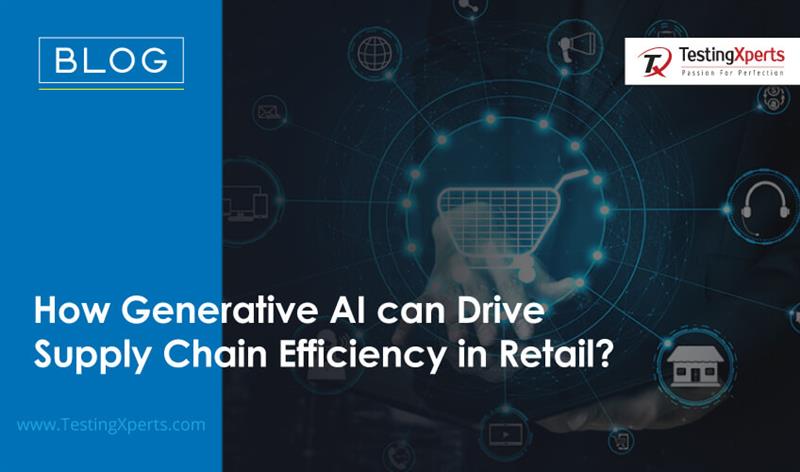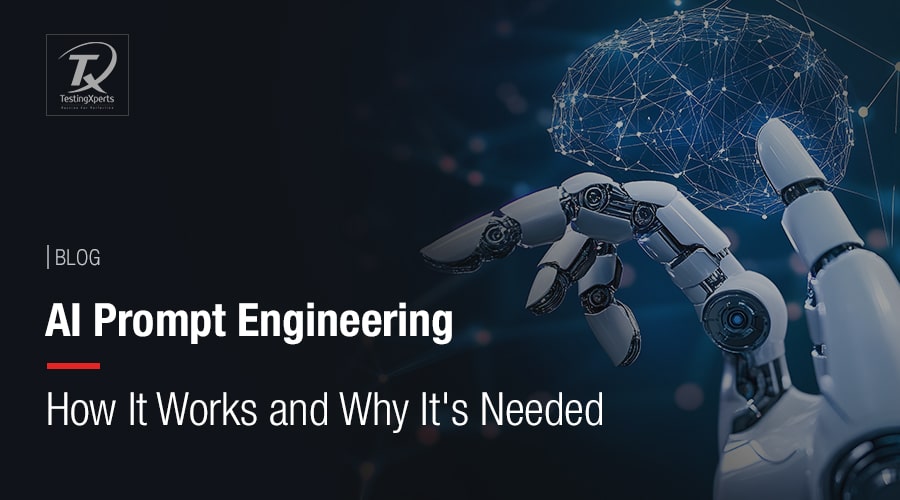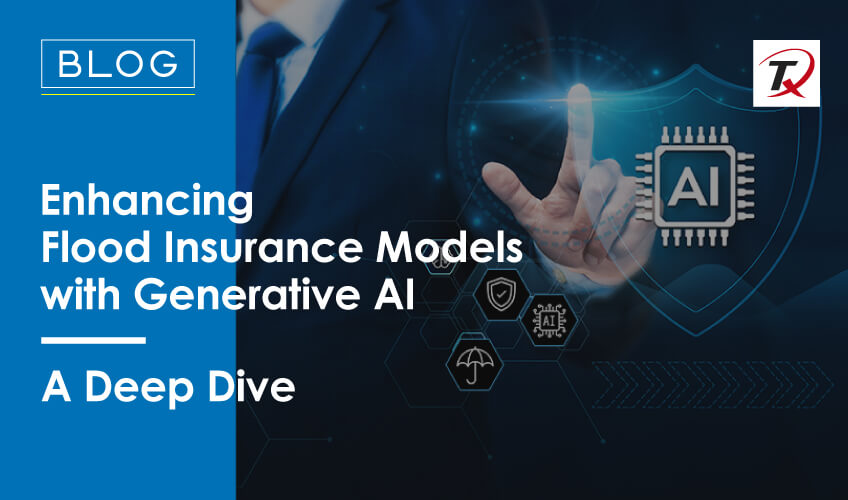
- Flood Coverage Insurance Risk Assessment
- Using Generative AI in Flood Insurance Risk Assessment
- Benefits of Using Generative AI in Flood Risk Management
- Why Partner with Tx for Generative AI Integration?
- Summary
Floods are among the most common and devastating natural disasters worldwide. They affect millions of lives and properties. Flash floods occur when heavy rainfall hits areas without proper drainage for a short period. Other causes of flood events are high tides, river overflow, snow melting, and storm surges. In the US alone, the damage caused by floods is huge, with the National Flood Insurance Program revealing that an inch of floodwater causes $25,000 of damage. In the last five years, the monetary damage caused worldwide due to floods was $299 billion, and the insured losses were about 15% of this total. Despite the high risk, many homeowners are still uncovered, with flood insurance rates varying drastically across states. For instance, in Louisiana, the coverage of homes insured against floods is 24.55%, while states like Minnesota have a minimal uptake at just 0.33%.
Floods pose a great risk to communities, economies, and infrastructure globally. As weather conditions have worsened, advanced technologies like generative AI for flood risk evaluation and mitigation have become necessary. It has the potential to significantly improve predictive accuracy, which could allow insurers to model flood risks with precision and efficiency. The result would be more accurate risk assessments and customer-centric insurance policies.
Flood Coverage Insurance Risk Assessment
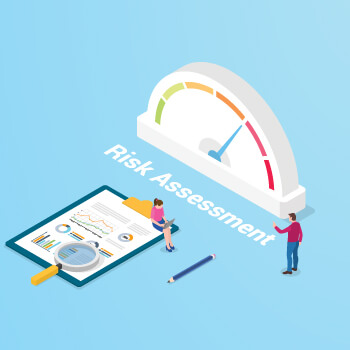
It involves assessing factors such as demography, vulnerability in structure, geographical position, past flood tide patterns, and hydrological data. Insurance companies utilize these details to determine the likelihood and potential severity of flooding at a particular location. After that, they draft insurance premiums, define coverage limits, and identify preventive measures. This significantly influences insurance providers’ financial stability and responsiveness to flood events. However, this process has been complex and resource-intensive because insurance companies are still somewhat dependent on outdated models that limit data sources. The flood coverage insurance risk assessment involves various factors:
• Geographical data includes the property’s proximity to water bodies, flood history, and elevation levels. Areas with severe historical flooding are classified as highly risky, and homeowners often face higher insurance premiums.
• Meteorological data such as rainfall patterns and storm frequency predict upcoming floods. Technologies like satellite imagery and climate modeling provide accurate predictions, allowing insurers to assess risk better.
• Human factors like population density, local flood management practices, and land use are also considered by insurers.
Using Generative AI in Flood Insurance Risk Assessment
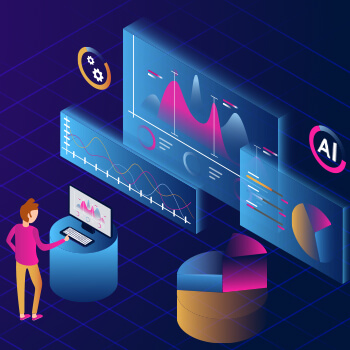
For a long time, insurers have relied on actuarial models and historical data to analyze risks and draft premiums accordingly. Although these methods have supported the industry in the past, they certainly have limitations when forecasting and handling complex and rapidly evolving risks. That’s where generative AI comes in. Integrating generative AI into flood risk assessment is a transformative shift in the insurance industry. It utilizes pre-trained models to discourse various scenarios, making it a precious tool for insurers.
It can more accurately predict and model flood risks in flood insurance, making it crucial to set premiums and determine policy coverage. The pre-trained models can be tailored to particular demographics, dangers, or topography while considering variables like occupations, projected lifespans, and economic conditions. This enables insurers to evaluate risks more accurately and adjust coverage premiums accordingly.
Insurers use risk valuation or underwriting to estimate and evaluate the present and future risks associated with an insurance policy and its policyholder. This determines the potential coverage and adjusts the fluctuating insurance policy cost based on requirements. Determining the exact premium to change isn’t an easy task. A lot of uncertainty prevents the policyholders from getting the best and most cost-effective coverage possible. Generative AI helps identify areas that went unrecognized as high-risk due to the limitations of traditional assessment methods. By determining these blind spots, insurers can offer more comprehensive, cost-effective coverage and provide better protection to policyholders.
As a subset of AI, generative AI’s ability to create new content, data mimicking real-world phenomena or images, has been helpful in flood risk evaluation and mitigation. It utilizes advanced algorithms and ML techniques to allow insurers, governments, and other stakeholders to analyze huge data, simulate flood scripts, and create reliable mitigation processes.
Benefits of Using Generative AI in Flood Risk Management

The generative AI applications in flood risk management transform how policymakers and insurers tackle this complex challenge. Leveraging AI capabilities, they can generate and analyze large datasets, and stakeholders can better understand flood risks. It will help them enhance their risk management strategies. Let’s take a close look at some of the benefits of utilizing generative AI in insurance and flood risk management:
Risk Assessment:
Generative AI processes large datasets from various sources to identify high-risk areas and create actionable insights. The sources could be weather forecasts and records, environmental data, satellite imagery data, etc. The algorithms analyze datasets to provide more accurate risk assessments, facilitating better decision-making for policyholders. They also allow insurers to understand better and quantify flood risks related to specific areas.
Underwriting Accuracy:
It leverages advanced analytics to allow insurers to improve their underwriting decisions. They can customize coverage options and pricing according to the policyholder’s property’s flood risk profiles, thus delivering accurate and fair premiums.
Predictive Modeling:
It can quickly analyze historical flood data (which is huge), terrain information, and other relevant factors to create highly effective predictive models. These models can accurately forecast flood events, allowing insurers to plan ahead. They can also check the coverage feasibility and adjust the insurance policy cost accordingly.
Better Response in Real-time Flood Events:
Generative AI can contribute to the community by facilitating better decision-making during real-time flood events. It can predict incoming flood events by analyzing weather patterns and environmental changes, thus warning communities and emergency services early. This could minimize damage and improve response time, reducing economic losses and saving lives.
Fraud Detection:
Gen AI algorithms have the capability to identify patterns and discrepancies indicating fraudulent activity in flood insurance claims data. Insurers can flag suspicious claims for further investigation, mitigate the chances of losses, and protect the bottom line.
Claims Processing:
It helps accelerate claims processing by automating risk assessment and data analysis tasks. This enables insurers to improve the time to evaluate flood damage, verify claims, and disburse payments to policyholders. The result would be faster claims processing and resolution and improved CX.
Why Partner with Tx for Generative AI Integration?

Tx has a pool of tailored testing services that guarantee robust and effective testing of generative AI solutions. Our experts have experience handling AI algorithm complexities and delivering dependable results. We thoroughly analyze insurance companies’ requirements and assist them in gaining a competitive edge in the market. We deploy the latest tools and in-house accelerators, such as Tx-SmarTest, Tx-HyperAutomate, etc., in AI testing to identify issues and ensure the AI system’s robustness. By utilizing Tx-Reusekit, Tx-IaCT, Tx-PEARS, etc. (our in-house accelerators), we ensure that your generative AI applications fulfill performance, security, accuracy, and trustworthiness benchmarks. Our QA and digital engineering portfolio and unparalleled track record make us a reliable partner for insurance clients.
Summary
Floods are among the most common natural disasters that cause significant economic and property damage. Traditional flood insurance that covers losses due to water damage does not meet the need for comprehensive risk assessment and management. Due to this, generative AI is increasingly utilized in the flood insurance process to enhance the precision of risk assessments and policy customization. This technology aids in accurate premium setting, predictive modeling, and efficient claims processing. Tx plays a crucial role in this integration by ensuring the reliability and effectiveness of AI applications through digital QA and engineering services, helping insurers offer better protection and service to policyholders.
Contact our experts now to find out how we can assist you with generative AI integration.
Discover more
Get in Touch
Stay Updated
Subscribe for more info


